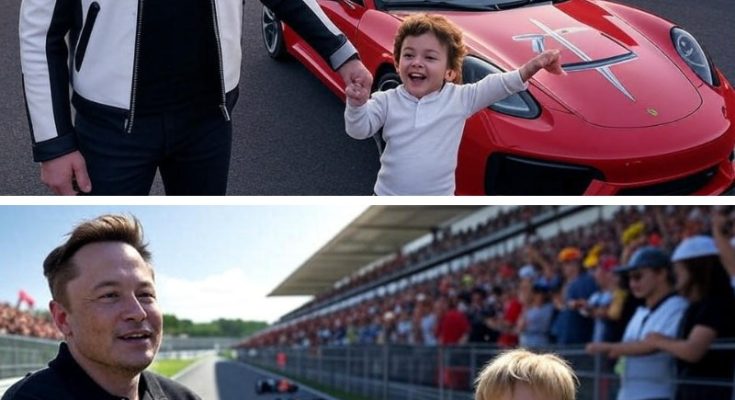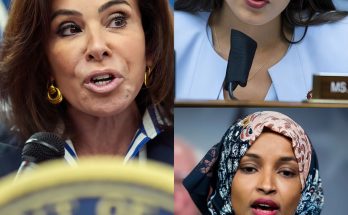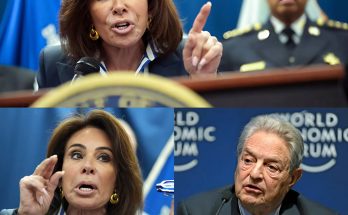
Elon Musk and Son Lil X’s Car Racing Day Turns Into a Billion-Dollar Acquisition
On a sunny afternoon in May 2025, Elon Musk, the billionaire entrepreneur behind Tesla and SpaceX, took his son X Æ A-Xii—affectionately known as Lil X—out for a day of car racing at a private track near Austin, Texas. What started as a father-son bonding experience quickly escalated into a headline-grabbing moment when Lil X pointed at a sleek electric race car, prompting Musk to buy the entire company behind it. This impulsive acquisition, which stunned the tech and automotive worlds, underscores Musk’s unpredictable nature and his unrelenting drive to dominate the electric vehicle (EV) industry—even as Tesla faces its own challenges.
A Day at the Track: Father-Son Bonding with a Twist
Elon Musk has always been vocal about his desire to inspire his children, often sharing glimpses of his family life despite his high-profile feuds and business ventures. Lil X, born in May 2020 to Musk and musician Grimes, has frequently been spotted by his father’s side at public events, from SpaceX launches to meetings with political figures like former President Donald Trump. On May 17, 2025, Musk decided to treat his five-year-old son to a day of car racing, a passion that aligns with Tesla’s automotive legacy and Musk’s futuristic vision for transportation.
The father-son duo arrived at Circuit of the Americas, a renowned racing track in Austin, where Musk had rented out a section for a private event. Lil X, dressed in a miniature racing suit emblazoned with the Tesla logo, was visibly thrilled as he watched electric race cars zip around the track. Among the vehicles was a striking prototype from VoltSpeed Innovations, a small but innovative startup founded in 2022 by former Chrysler engineer Chris Barman. VoltSpeed had recently gained attention for its affordable electric trucks, priced at $25,000—far below Tesla’s Cybertruck starting at $69,990—posing a potential challenge to Musk’s market dominance.
As the VoltSpeed car—a sleek, aerodynamic racer designed for high-speed performance—completed a lap, Lil X pointed excitedly and shouted, “Daddy, I want that one!” Musk, known for his doting nature as a father, smiled and ruffled his son’s hair. But what happened next was far beyond a simple purchase of a car. Within hours, Musk was on the phone with his team, instructing them to initiate a buyout of VoltSpeed Innovations. By the evening of May 17, 2025, news broke that Musk had acquired the company for a staggering $1.2 billion, a move that left industry insiders and VoltSpeed’s founders reeling.

VoltSpeed Innovations: The Little Company That Caught Musk’s Eye
VoltSpeed Innovations, though relatively unknown compared to giants like Tesla, had been making waves in the EV sector. Founded by Chris Barman, a mechanical engineer with a background at Chrysler, the company emerged from stealth mode in early 2025 with a mission to democratize electric vehicles. Its flagship product, an electric truck priced at $25,000 (or under $20,000 with EV tax credits), was a direct competitor to Tesla’s Cybertruck, appealing to budget-conscious consumers in a market where Tesla’s sales were faltering. The company also ventured into electric race cars, aiming to showcase its battery technology and performance capabilities.
VoltSpeed’s presence at the Austin track was part of a promotional event to attract investors and partners. The startup had been struggling to secure funding amid a tough economic climate, with Tesla’s dominance and the broader decline in EV demand—partly due to Musk’s polarizing political stances—making it difficult for smaller players to gain traction. However, its innovative designs and competitive pricing had caught the attention of industry analysts, who saw VoltSpeed as a potential disruptor.
Musk’s decision to buy VoltSpeed came at a pivotal moment for Tesla. The company had been grappling with declining sales, with a 13% drop in Q1 2025, exacerbated by backlash against Musk’s right-wing political activities, including his role in the Trump administration’s Department of Government Efficiency (DOGE). Tesla’s profits had plunged 71% in the first quarter, and used Tesla prices had cratered 10% year-over-year in March 2025, reflecting consumer dissatisfaction with Musk’s public persona. Against this backdrop, acquiring VoltSpeed could be seen as a strategic move to bolster Tesla’s portfolio and fend off competition in the affordable EV segment.
The Acquisition: A Billion-Dollar Impulse
Musk’s acquisition of VoltSpeed Innovations was finalized with remarkable speed. On the evening of May 17, 2025, Musk posted on X, the social media platform he owns, saying, “Lil X picked a winner today. Welcome VoltSpeed to the Tesla family—let’s make EVs for everyone!” The post, which included a photo of Lil X sitting in the VoltSpeed race car, garnered millions of likes and sparked a frenzy of speculation about Musk’s intentions.
The $1.2 billion deal, while a small fraction of Musk’s estimated $400 billion net worth, was a lifeline for VoltSpeed, which had been on the brink of financial collapse. Chris Barman, VoltSpeed’s CEO, released a statement on May 18, 2025, saying, “We’re honored to join forces with Tesla and Elon Musk. This acquisition will allow us to scale our vision and bring affordable, high-performance EVs to the masses.” However, sources close to the company revealed that Barman and her team were initially blindsided by Musk’s offer, having expected a partnership or investment rather than a full buyout.
For Musk, the acquisition served multiple purposes. First, it eliminated a potential competitor in the affordable EV market, a segment Tesla had struggled to penetrate despite Musk’s earlier promises of a compact EV platform. Second, it allowed Tesla to integrate VoltSpeed’s battery technology and race car designs into its own offerings, potentially enhancing the Cybertruck and future models. Finally, the move sent a message to the industry: Musk was still a force to be reckoned with, capable of making bold, impulsive decisions that reshaped the market overnight.
The Public Reaction: Admiration, Criticism, and Skepticism
The news of Musk’s acquisition was met with a mix of admiration, criticism, and skepticism. Fans on X praised Musk’s ability to turn a casual outing with his son into a billion-dollar business deal, with one user writing, “Only Elon Musk can go car racing with his kid and end up buying a company by dinner!” Others saw the move as a savvy strategy to address Tesla’s recent struggles, noting that VoltSpeed’s affordable trucks could help Tesla recapture market share lost to competitors like China’s BYD.
However, critics were quick to point out the irony of Musk’s acquisition. Tesla had recently faced backlash for ending a policy that prohibited U.S. leasing customers from buying their cars at lease-end, a decision Musk had justified by claiming the vehicles would be used for robotaxis. Instead, Tesla sold the cars, a move that drew scrutiny for contradicting Musk’s long-standing promises of deploying self-driving vehicles—a promise he has made annually since 2016 without fully delivering. The VoltSpeed acquisition, some argued, was a distraction from Tesla’s failure to roll out robotaxis, with Musk pivoting to a new narrative to maintain investor confidence.
Environmental groups also voiced concerns about the acquisition, pointing to the carbon footprint of Musk’s frequent business maneuvers and the broader impact of Tesla’s operations. Meanwhile, Tesla’s shareholders expressed cautious optimism, with the company’s stock rising 3% in after-hours trading on May 17, 2025, following the announcement. However, some investors remained wary, recalling Musk’s earlier pivot away from affordable EVs to focus on driverless taxis and humanoid robots—a shift that had yet to yield significant results.
A Father’s Love or a Business Power Play?
The acquisition also sparked discussions about Musk’s role as a father and how he balances his family life with his relentless business ambitions. Musk, who has 14 children as of April 2025, has often spoken about his desire to create a legacy for his kids, even building a $35 million family compound in Texas for them to live together. His decision to buy VoltSpeed at Lil X’s prompting was seen by some as a heartwarming gesture—a father indulging his son’s excitement—but others viewed it as a calculated power play masked as a family moment.
Musk’s relationship with his children has been under scrutiny, particularly amid his ongoing custody battles with Grimes and Ashley St. Clair, the mother of his youngest child, Romulus. Grimes has publicly criticized Musk for exposing Lil X to the public eye, including at political events with Trump, while St. Clair has accused Musk of cutting her child support in half, forcing her to sell her Tesla Model S. Against this backdrop, Musk’s day out with Lil X took on added significance, with some speculating that the acquisition was an attempt to project a positive image amid personal and professional turmoil.
What’s Next for Tesla and VoltSpeed?
As of May 19, 2025, the integration of VoltSpeed Innovations into Tesla is already underway. Musk has reportedly tasked Tesla’s engineering team with adapting VoltSpeed’s battery technology for the Cybertruck, aiming to lower its price point and compete more effectively with rivals. There are also rumors that Tesla may reintroduce the VoltSpeed race car as part of a new motorsport division, potentially competing in events like Formula E to showcase its EV capabilities.
For VoltSpeed’s employees, the acquisition brings both opportunities and uncertainty. While the influx of Tesla’s resources will allow the startup to scale, some worry about losing their autonomy under Musk’s leadership, known for its demanding and unorthodox style. Chris Barman, who will reportedly stay on as an advisor, has expressed optimism about the future, but the road ahead remains unclear.
Conclusion
Elon Musk’s decision to buy VoltSpeed Innovations after a day of car racing with his son Lil X is a quintessential example of his unpredictable, larger-than-life persona. What began as a father-son outing turned into a billion-dollar acquisition that sent shockwaves through the EV industry, reinforcing Musk’s reputation as a visionary who operates on his own terms. While the move has its critics, it also highlights Musk’s ability to seize opportunities and reshape markets in an instant—whether driven by a child’s enthusiasm or a strategic imperative. As Tesla navigates its challenges and VoltSpeed finds its place within the Musk empire, the world watches to see what this billionaire and his young son will do next.



